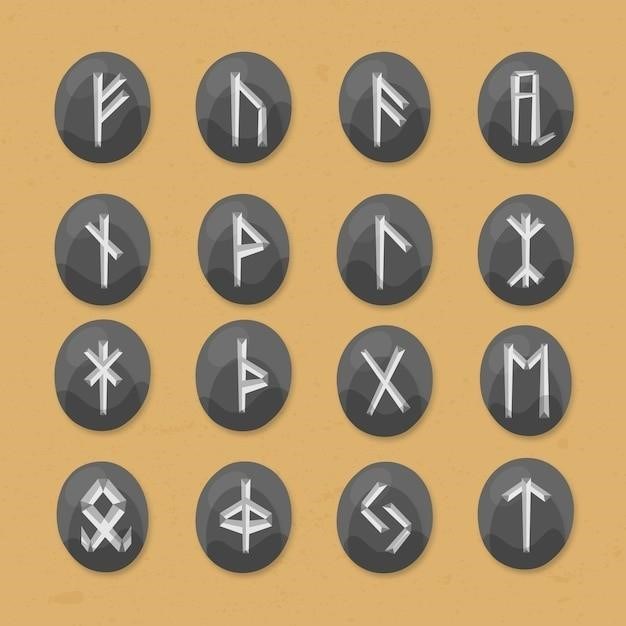Star Trek⁚ Voyager Episode Guide
This guide provides a comprehensive overview of the popular science fiction series Star Trek⁚ Voyager, detailing its premise, characters, notable episodes, themes, reception, and legacy. Explore each season’s episodes, delve into the show’s intricate storylines, and discover the enduring impact of Voyager on the Star Trek universe. From its initial concept to its final episode, this guide offers an in-depth look at the series that captivated audiences for seven seasons.
Introduction
Star Trek⁚ Voyager, the fifth installment in the beloved Star Trek franchise, embarked on a captivating journey through the vast expanse of the Delta Quadrant, a distant region of the galaxy. Created by Rick Berman, Michael Piller, and Jeri Taylor, Voyager aired on UPN from 1995 to 2001, captivating audiences with its compelling storylines, memorable characters, and exploration of themes relevant to both the Star Trek universe and contemporary society. The series followed the adventures of the USS Voyager, a Starfleet vessel stranded far from home, as it navigated the treacherous Delta Quadrant alongside a diverse crew, including members of the Maquis, a dissident group seeking independence from the Federation.
Voyager’s unique premise, featuring a Federation starship stranded lightyears from Earth, presented a compelling narrative framework that allowed for the exploration of themes such as survival, adaptation, and the complexities of human nature in the face of adversity. The series’ diverse cast of characters, each with their own unique perspectives and experiences, further enriched the storylines and provided a platform for examining the human condition in a sci-fi setting.
Over its seven-season run, Voyager produced 172 episodes, each filled with captivating stories, engaging characters, and a blend of action, drama, and social commentary. The series left an enduring legacy on the Star Trek franchise, inspiring generations of fans and solidifying its place as a significant contribution to science fiction television.
Overview
Star Trek⁚ Voyager presented a unique and compelling narrative for the Star Trek franchise, focusing on the journey of a Starfleet vessel stranded lightyears from home in the uncharted Delta Quadrant. The series followed the USS Voyager, commanded by Captain Kathryn Janeway, as it navigated this treacherous and unknown territory alongside a diverse crew, including members of the Maquis, a dissident group seeking independence from the Federation. The show’s premise, featuring a Federation starship forced to coexist with a group of rebels, created an intriguing dynamic and a compelling backdrop for exploring themes of survival, adaptation, and the complexities of human nature in the face of adversity.
Voyager’s storylines often explored the challenges faced by the crew in their quest to return home, including encounters with alien civilizations, dangerous adversaries, and the ever-present threat of the Borg, a technologically advanced collective of cybernetic organisms. The series also delved into the personal journeys of the crew members, showcasing their individual struggles and triumphs as they navigated the challenges of living and working together in a confined and unpredictable environment.
With its blend of action, drama, and social commentary, Voyager provided a captivating and thought-provoking exploration of the human condition, the complexities of interstellar relationships, and the enduring power of hope and resilience in the face of seemingly insurmountable odds.
Premise and Setting
Star Trek⁚ Voyager is set in the vast and unexplored Delta Quadrant, a region of space located far beyond the familiar territory of the Star Trek universe. The series’ premise revolves around the USS Voyager, a Starfleet vessel, being stranded in this remote and dangerous quadrant after a catastrophic encounter with a powerful being known as the Caretaker. The Voyager, along with its crew, is forced to embark on a perilous journey home, spanning over 70,000 lightyears. This extraordinary situation sets the stage for a unique and compelling narrative.
The Delta Quadrant is a realm teeming with diverse and often hostile alien civilizations. The crew of Voyager encounters a wide array of alien species, ranging from technologically advanced societies to primitive cultures, each with its own distinct customs, beliefs, and agendas. The show’s setting provides a rich tapestry for exploring themes of cultural exchange, interspecies diplomacy, and the potential for both conflict and cooperation between different civilizations.
The Delta Quadrant is also home to a number of formidable adversaries, including the Kazon, a group of nomadic raiders, and the Borg, a technologically advanced collective of cybernetic organisms. These threats constantly challenge the Voyager crew, forcing them to adapt, innovate, and overcome seemingly insurmountable obstacles in their quest to return home.
Main Characters
Star Trek⁚ Voyager features a diverse cast of characters who navigate the challenges of a long and arduous journey through the Delta Quadrant. At the helm of the USS Voyager is Captain Kathryn Janeway, a strong-willed and intelligent Starfleet officer. Janeway’s leadership is tested as she strives to maintain order and morale while guiding her crew towards home. Alongside her is Commander Chakotay, a former Maquis leader who brings a unique perspective and tactical expertise to the Voyager crew.
The Voyager crew also includes a number of other memorable characters. There’s the Vulcan security chief Tuvok, a skilled diplomat and strategist, who brings his logic and discipline to the team. Then there’s the ship’s chief engineer, B’Elanna Torres, a half-human, half-Klingon officer, who is known for her ingenuity and fierce determination. The ship’s doctor, known as “The Doctor,” is a remarkable holographic program who constantly learns and grows as a medical professional. And finally, there’s Seven of Nine, a former Borg drone who joins the Voyager crew and brings her unique knowledge and experience to the team.
These main characters, each with their own distinct personalities and skills, are the heart of Voyager’s story. Their interactions, relationships, and individual journeys contribute to the show’s rich narrative tapestry, exploring themes of leadership, loyalty, friendship, and personal growth.
Recurring Characters
Beyond the main cast, Star Trek⁚ Voyager features a compelling array of recurring characters who add depth and intrigue to the series’ narrative. These characters often play significant roles in specific episodes, adding layers of complexity to the Voyager crew’s experiences in the Delta Quadrant.
One prominent recurring character is Neelix, a Talaxian chef and diplomat who joins Voyager early in their journey. Neelix brings his knowledge of the Delta Quadrant and his culinary skills to the ship, becoming a valued member of the crew. Another notable recurring character is Kes, a Ocampan who possesses powerful telepathic abilities. Kes’s connection to the ship and her unique perspective on the Voyager’s mission provide interesting storylines. The Borg also play a recurring role, often posing significant threats to the Voyager crew. The Borg’s relentless pursuit of assimilation and their advanced technology bring a sense of danger and suspense to many episodes.
These recurring characters, with their diverse backgrounds and motivations, contribute to the richness and complexity of Voyager’s narrative, adding new dimensions to the show’s exploration of themes of human connection, cultural exchange, and the challenges of survival in an unknown galaxy.
Notable Episodes
Star Trek⁚ Voyager boasts a diverse collection of episodes that showcase the series’ compelling themes, captivating storylines, and memorable characters. Among these standouts, “Caretaker” serves as the series premiere, introducing the core premise of Voyager’s journey home. This episode sets the stage for the show’s central conflict, as the crew finds themselves stranded in the Delta Quadrant and forced to rely on each other for survival. “The Killing Game” is another notable two-part episode that explores the complex relationship between humans and the Borg. The episode features a chilling portrayal of the Borg’s assimilation process and the psychological impact on those who are captured by them.
The episode “Unity” is a pivotal moment in the development of Seven of Nine, a Borg who is rescued by Voyager. This episode delves into the Borg’s collective consciousness and raises questions about the nature of individuality and assimilation. Another episode that stands out is “The Thaw,” which features a unique storyline that explores the concept of time and the passage of life. These episodes, with their compelling narratives and thought-provoking themes, represent the high quality of storytelling that characterizes Star Trek⁚ Voyager.
The series finale, “Endgame,” brings Voyager’s seven-season journey to a close, offering a satisfying conclusion to the crew’s long and arduous journey home. This episode, with its complex plot twists and emotional resonance, provides a fitting end to one of the most beloved series in the Star Trek franchise.
Themes and Influences
Star Trek⁚ Voyager delves into a multitude of profound themes, exploring human nature, social dynamics, and the complexities of life in a vast and unknown universe. The series frequently examines the human condition, showcasing the challenges of survival, the power of hope, and the importance of collaboration in the face of adversity. Voyager’s exploration of the Delta Quadrant, a region of space far removed from the familiar territories of the Federation, provides a compelling setting for the exploration of these themes. The crew’s encounters with alien species, each with their unique cultures and beliefs, raise questions about diversity, tolerance, and the search for common ground.
The series also grapples with the ethical dilemmas surrounding technology, particularly in its exploration of the Borg, a collective of cybernetically enhanced individuals who seek to assimilate others. The Borg’s relentless pursuit of uniformity and their disregard for individual identity challenge the viewers’ understanding of human nature and the value of individuality. Voyager’s exploration of the Borg’s philosophy and motivations raises questions about the nature of free will, the limits of progress, and the potential consequences of unchecked technological advancement.
Throughout its seven seasons, Voyager consistently explores the themes of survival, adaptation, and the enduring power of human spirit in the face of seemingly insurmountable obstacles. The series also draws inspiration from various sources, including classic science fiction literature, contemporary social issues, and the rich history of the Star Trek franchise itself, making it a captivating and enduring exploration of the human condition.
Reception and Legacy
Star Trek⁚ Voyager garnered a mixed reception upon its initial release, with some viewers embracing its unique premise and characters while others found it less compelling than previous Star Trek series. The show’s emphasis on the journey home and its exploration of the Delta Quadrant, a region of space far removed from the familiar territories of the Federation, proved divisive among fans. Despite its mixed reception, Voyager enjoyed significant popularity throughout its seven-season run, becoming a successful addition to the Star Trek franchise. The series’ engaging storylines, complex characters, and exploration of enduring themes resonated with audiences, solidifying its place in popular culture.
Voyager’s legacy extends beyond its television run, influencing subsequent Star Trek series and contributing to the ongoing exploration of the franchise’s themes. The series’ introduction of the Borg, a collective of cybernetically enhanced individuals, further expanded the Star Trek universe, adding a formidable new antagonist to the franchise’s mythology. The show’s exploration of the Borg’s philosophy and motivations continues to inspire discussion and debate among fans, prompting reflection on the nature of individuality, the limits of progress, and the potential consequences of unchecked technological advancement.
Star Trek⁚ Voyager’s enduring legacy lies in its exploration of themes that continue to resonate with audiences today, including the power of hope, the importance of collaboration, and the enduring spirit of humanity in the face of adversity. The series serves as a reminder of the ongoing search for knowledge, understanding, and connection in an ever-expanding universe, a quest that continues to inspire generations of viewers.

Season 1
Season 1 of Star Trek⁚ Voyager introduces the premise of the show, which follows the USS Voyager, a Federation starship, as it traverses the Delta Quadrant, a region of space far removed from Earth. The season establishes the central conflict of the series, with the Voyager crew facing the challenges of survival, exploration, and the long journey home. The season also introduces the key characters of the series, including Captain Kathryn Janeway, a determined and resourceful Starfleet officer, and Chakotay, a Maquis leader who initially opposes Janeway’s command but ultimately becomes a trusted ally.
The season’s storylines delve into the complexities of the crew’s newfound circumstances, exploring themes of trust, cooperation, and the challenges of adapting to a hostile environment. The season also introduces the Voyager crew’s encounters with various alien species, including the Kazon, a group of opportunistic and often ruthless raiders, and the Ocampa, a peaceful and technologically advanced species native to the Delta Quadrant. Season 1 lays the groundwork for the series’ overarching narrative, setting the stage for the adventures and challenges that lie ahead for the Voyager crew.
Notable episodes from Season 1 include “Caretaker,” which introduces the premise of the series and the Voyager crew’s initial encounter with the Ocampa and the Kazon; “Parallax,” which explores the consequences of time travel and the potential for altering the past; and “Eye of the Needle,” which introduces the concept of a temporal anomaly and its potential to disrupt the fabric of time.
Season 2
Season 2 of Star Trek⁚ Voyager deepens the exploration of the Delta Quadrant, introducing a wider array of alien cultures and challenges. The season further develops the complex dynamics between the Voyager crew, highlighting their strengths and weaknesses as they navigate the unfamiliar territory. The crew’s relationships are tested as they encounter ethical dilemmas, face personal losses, and confront their own biases.
The season also delves into the crew’s ongoing struggle for survival, as they face threats from both external forces, such as the Kazon and the Borg, and internal conflicts, such as the ongoing tensions between Starfleet and the Maquis. Season 2 introduces the enigmatic and powerful Borg, a collective of cybernetic organisms, as a recurring threat. The Borg’s relentless pursuit of assimilation and their advanced technology pose a formidable challenge to Voyager.
Notable episodes from Season 2 include “The Thaw,” which introduces the Borg Queen, a central figure in Borg society; “Basics, Part I” and “Basics, Part II,” which depict the Kazon’s attempt to seize Voyager and the crew’s subsequent struggle to regain control; and “Alliances,” which explores the complex relationships between the Voyager crew and the Talaxians, a peaceful species threatened by the Kazon.
Season 3
Season 3 of Star Trek⁚ Voyager continues the crew’s arduous journey home, marked by both setbacks and breakthroughs. The season delves deeper into the intricacies of the Delta Quadrant, introducing new alien races and exploring the complexities of interstellar politics and diplomacy. The Voyager crew’s struggles for survival are intensified as they confront the dangers of the unknown, facing threats from both familiar enemies and unexpected adversaries.
The season also explores the evolving dynamics within the crew, highlighting the personal journeys of individual characters as they grapple with loss, betrayal, and the moral ambiguities of their situation. Key episodes delve into themes of identity, morality, and the power of human connection. Voyager’s encounters with the Borg continue to be a central element of the season, as the crew navigates the ever-present threat of assimilation and the constant struggle for survival.
Notable episodes from Season 3 include “Unity,” which explores the concept of Borg unity and the potential for individual consciousness within the Collective; “The Doctor is In,” which delves into the evolving nature of the Emergency Medical Holographic program; and “The Q and the Grey,” which introduces the powerful and enigmatic Q Continuum into the Voyager narrative.

Season 4
Season 4 of Star Trek⁚ Voyager sees the crew continue their perilous journey through the Delta Quadrant, facing new challenges and forging deeper connections with the alien races they encounter. This season delves deeper into the complexities of the Borg, exploring their internal conflicts and the potential for individual agency within the Collective. The Voyager crew’s encounters with the Borg are marked by both conflict and unexpected alliances, as they navigate the delicate balance between survival and the desire for peace.
Beyond the Borg, the season introduces new and intriguing alien species, including the Hirogen, a race of advanced hunters who view conflict as a form of art, and the Kazon, a treacherous and unpredictable species who pose a constant threat to Voyager. The crew’s interactions with these alien races highlight the challenges of interspecies communication and the ethical dilemmas of navigating unfamiliar cultures.
Season 4 also delves deeper into the personal lives of the Voyager crew, exploring their individual struggles and triumphs as they grapple with the emotional toll of their prolonged journey. Key episodes focus on the evolving relationship between Captain Janeway and Commander Chakotay, the continued development of the Doctor’s consciousness, and the complex journey of Seven of Nine as she adapts to life outside the Borg Collective.



